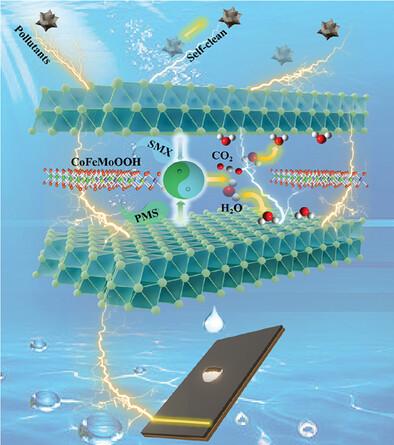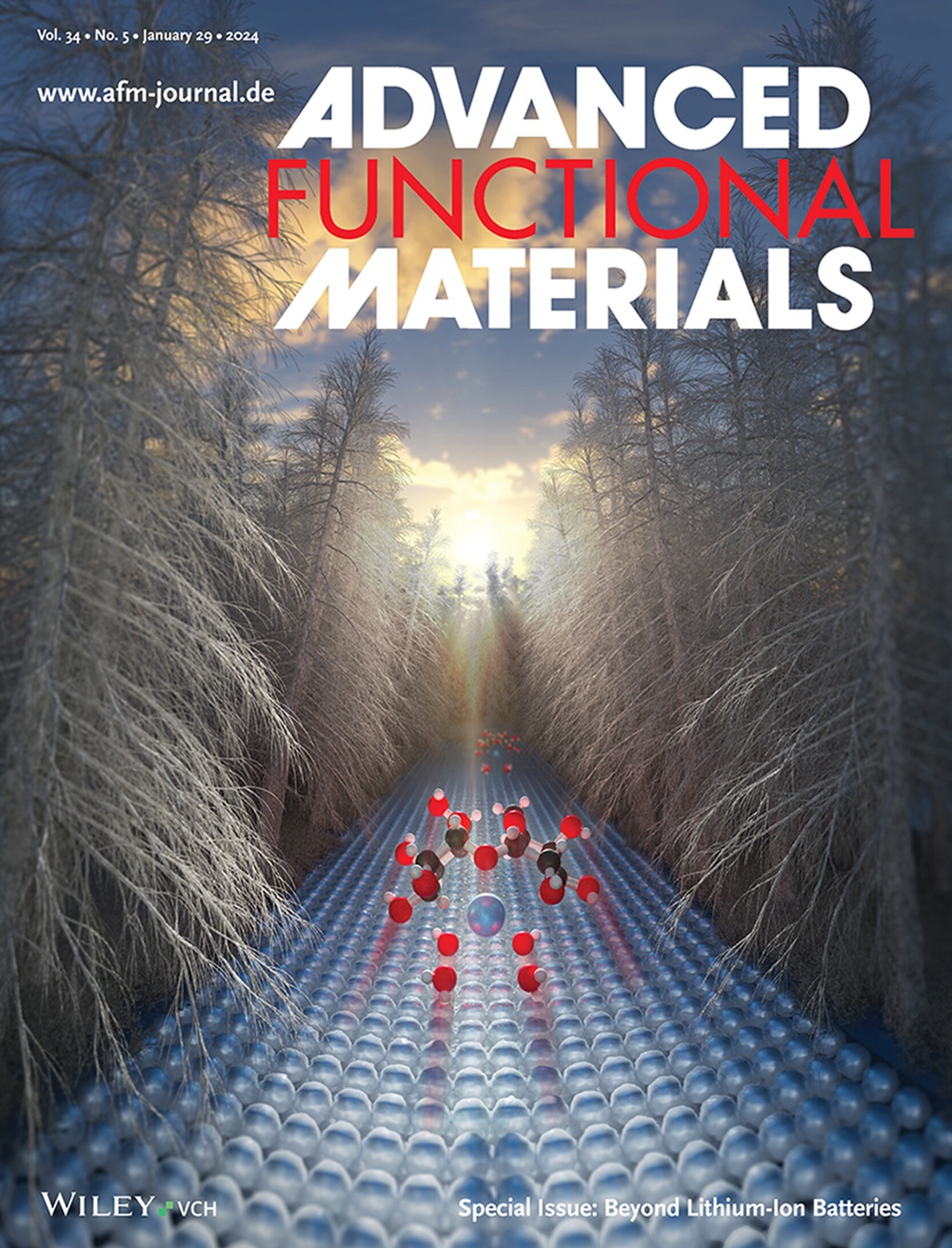Triboelectric Pulse Promotes Self-Cleaning, Catalysis of Nano-Confined Domain Lamellar Membranes for Effective Water Decontamination
IF 18.5
1区 材料科学
Q1 CHEMISTRY, MULTIDISCIPLINARY
引用次数: 0
Abstract
Triboelectric nanogenerators are promising green electrocatalytic alternative energy sources; however, their low current density renders practical applications challenging. Herein, a self-generating electricity mode based on a droplet friction strategy that significantly mitigates membrane fouling while facilitating the contact of oxidizing substances and sulfamethoxazole within the nanoconfined spaces of 2D conductive catalytic membranes is proposed, which are elaborately designed via the co-assembly of CoFeMoOOH and MXene laminates. In the confined domain space of the membrane, triboelectric pulses resulted in a 267% (1800 to 4800 min−1) enhancement of the degradation rate constant of sulfamethoxazole, which is significantly higher than the 17% (0.35 to 0.41 min−1) for the suspension system. In situ filtration and kinetic modeling revealed that the pulsed electrical signal generated by the permeate promoted molecular polarization and longitudinal mass transfer within the confined domain space. The alteration in the adsorption-desorption behavior of solvent/solute molecules between the confined domain layers leads to the migration of water molecules and pollutants in opposite directions, facilitating positive catalytic reactions and fouling inhibition. The proposed self-generating pulsed electricity-assisted nanoconfined catalysis offers a powerful tool for efficiently harnessing environmental micro-energy for the green upgrading of water treatment processes.

三电脉冲促进纳米致密畴片层膜的自清洁和催化作用,实现有效的水质净化
三电纳米发电机是一种前景广阔的绿色电催化替代能源;然而,由于其电流密度低,实际应用具有挑战性。本文提出了一种基于液滴摩擦策略的自发电模式,它能显著减轻膜堵塞,同时促进氧化物质和磺胺甲噁唑在二维导电催化膜的纳米封闭空间内接触。在膜的封闭域空间中,三电脉冲使磺胺甲噁唑的降解速率常数提高了 267%(1800 至 4800 min-1),明显高于悬浮系统的 17%(0.35 至 0.41 min-1)。原位过滤和动力学建模显示,渗透物产生的脉冲电信号促进了分子极化和限制域空间内的纵向质量转移。密闭畴层之间溶剂/溶质分子吸附-解吸行为的改变导致水分子和污染物向相反方向迁移,促进了正催化反应和污垢抑制作用。所提出的自发电脉冲电辅助纳米封闭催化技术为有效利用环境微能量实现水处理工艺的绿色升级提供了有力工具。
本文章由计算机程序翻译,如有差异,请以英文原文为准。
求助全文
约1分钟内获得全文
求助全文
来源期刊

Advanced Functional Materials
工程技术-材料科学:综合
CiteScore
29.50
自引率
4.20%
发文量
2086
审稿时长
2.1 months
期刊介绍:
Firmly established as a top-tier materials science journal, Advanced Functional Materials reports breakthrough research in all aspects of materials science, including nanotechnology, chemistry, physics, and biology every week.
Advanced Functional Materials is known for its rapid and fair peer review, quality content, and high impact, making it the first choice of the international materials science community.
 求助内容:
求助内容: 应助结果提醒方式:
应助结果提醒方式:


